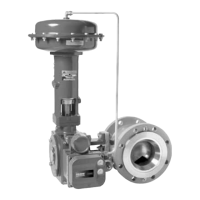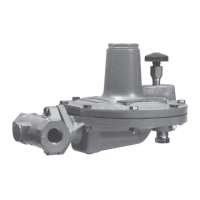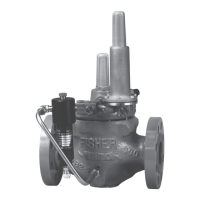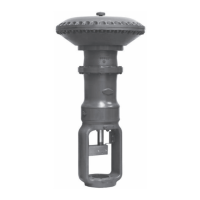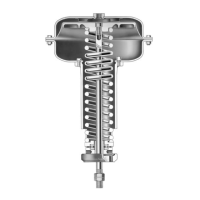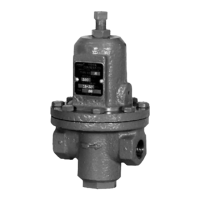Instruction Manual
D101322X012
1051 and 1052 Size 33 Actuators
June 2017
12
Mounting Adaptations
F and G Adaptations
The procedures given in this instruction manual apply directly to F and G mounting adaptations. Refer to figures 9 and
10.
H Mounting Adaptations
Whenever the procedures require separating the actuator from the operated equipment, it may be necessary to
remove brackets, couplings, and stub shafts before proceeding. Refer to figure 11 for parts used with the H mounting
adaptation.
J Mounting Adaptations
Whenever the procedures require separating the actuator from the valve body, it may be necessary to remove
couplings and keyways. Refer to figure 13 for parts used with the J mounting adaptation.
WARNING
Avoid personal injury or property damage from sudden release of process pressure or bursting of parts. Before performing
any maintenance operations:
D Do not remove the actuator from the valve while the valve is still pressurized.
D Always wear protective gloves, clothing, and eyewear when performing any maintenance operations.
D Disconnect any operating lines providing air pressure, electric power, or a control signal to the actuator. Be sure the
actuator cannot suddenly open or close the valve.
D Use bypass valves or completely shut off the process to isolate the valve from process pressure. Relieve process pressure
from both sides of the valve. Drain the process media from both sides of the valve.
D Vent the power actuator loading pressure and relieve any actuator spring precompression.
D Use lock‐out procedures to be sure that the above measures stay in effect while you work on the equipment.
D The valve packing box may contain process fluids that are pressurized, even when the valve has been removed from the
pipeline. Process fluids may spray out under pressure when removing the packing hardware or packing rings.
D Check with your process or safety engineer for any hazards that may be present from exposure to process media.
Replacing Diaphragm
Disassembly
1. Bypass the control valve. Relieve all loading pressure, and remove the tubing or pipe from the upper diaphragm
case (key 1).
2. Observe the position of the travel indicator pointer (key 37) and mark its position on the travel indicator scale
(key 35).
WARNING
Failure to control spring tension against the upper diaphragm case as outlined in the following step could result in sudden
spring decompression causing bodily injury or equipment damage. Control spring tension by following step 3 closely.
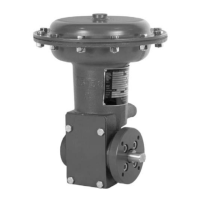
